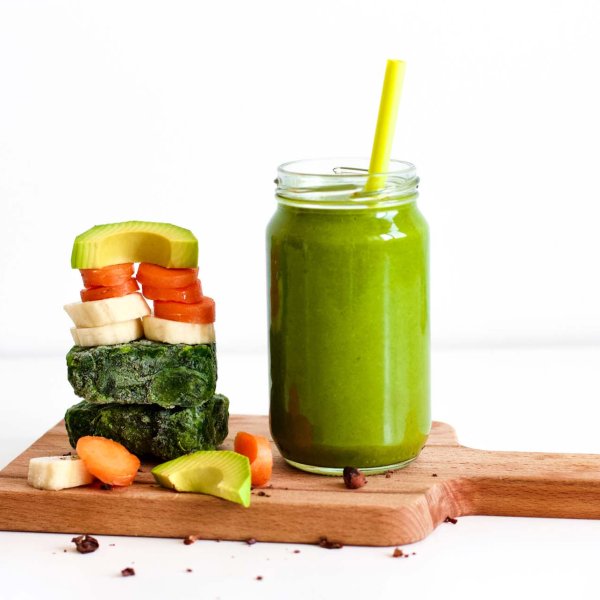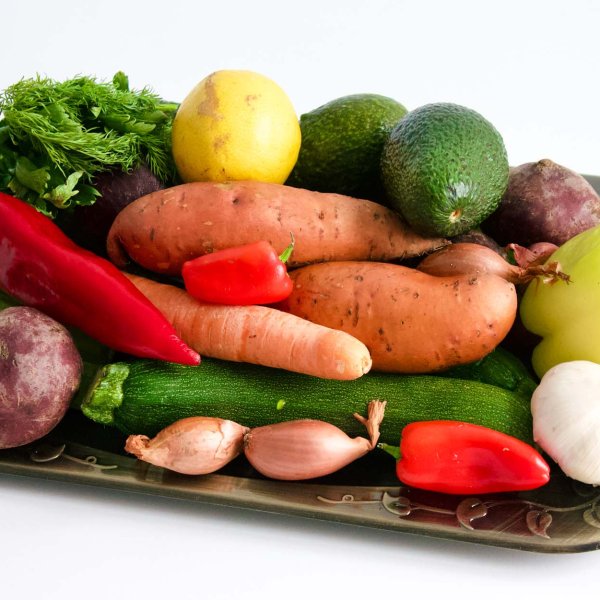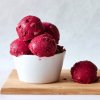JUMP TO
Check-out my simple guide to making smoothies, plus my best tips and tricks for transforming every smoothie into a healthy and tasty smoothie.
Making a smoothie sounds simple enough: buy a blender, throw in some fruit, maybe add some greens, enough water and blend everything until you reach that creamy consistency. This makes for a sweet drink that may be ok to test once or twice, but is this a healthy smoothie? What makes a healthy smoothie, anyway? How much fruit should you use in your smoothie? Besides fruits and spinach (or kale), what other ingredients could you add into your smoothie?
Smoothies that are a bit “different”
When I started blending smoothies, I didn’t really know what a smoothie is. In fact, I’d never tasted a smoothie before in my life. All that I knew about smoothies was that smoothies were some sort of colored drink made in a high-speed machine, using different kinds of fruits and maybe some leafy greens. Blending my first smoothie was quite an experience, and I’m happy to say that my recipes have evolved a lot since then.
My smoothies are a bit different compared to your average smoothie, as you’re about to see from this article. I try to keep fruit to a minimum while using many different vegetables, healthy fats, spices, and superfoods. I don’t concentrate on using only leafy greens, instead I like to include different kinds of veggies, changing them based on my personal preference and the way they mix together.
Leafy greens are just one category of veggies, but there are many other veggies out there that I believe are overlooked because of leafy greens. I also like to go one step further and use different warming spices and superfoods, enhancing the flavor and the benefits of my smoothies.
Looking for Recipes? Browse my huge collection of smoothie recipes.
Formula for making nourishing smoothies
This is literally the “formula” that I use every day for preparing my smoothies. I stand by it because it provides an array of nutrients while keeping carbohydrates to a minimum. This way I make sure that my smoothies are not only tasty but also healthy and full of nutrients.
Healthy Fats + Veggies + Few Fruits + Spices and Superfoods + Liquid
Smoothies are wonderful and they can be as simple or as complex as we want. Depending on the season or based on my mood or nutritional needs, my recipes can vary quite a lot, from very simple to very complex. Sometimes I’ll use all the plants I can find in my fridge while other times I’ll only blend an avocado with 1-2 fruits (or berries) and 2-3 different veggies. Sometimes I’ll use different Asian warming spices like turmeric, ginger or cardamom, while other times I feel the need to keep it simple.
Let’s discuss my smoothie formula
Healthy Fats
I always start with healthy fats, making sure I have enough of those. Using healthy fats will make your smoothie creamy, thick, and very easy to drink. If you didn’t know, eating healthy fats comes with many health benefits, from more energy to mental clarity, better digestion and increased satiety, less hunger and easy fasting, weight loss, better skin, and the list just goes on and on.
I strive to always include avocado and coconut oil in all my recipes, these being my main sources of healthy fats. They’re very easy to mix with anything, and they’ll add many health benefits to any smoothie. Optionally I may also use coconut butter, chia seeds, hemp seeds, coconut milk, nut butters or freshly made nut milks.
Veggies
I like using different kinds of veggies and I always try adding as many as possible. If you’re a beginner, my advice is to start with just a few different kinds of veggies, you don’t want to overdo it, especially if you’re just starting out. As you become more experienced, you’ll know what you like or don’t like, or what blends nicely together.
As a general rule, try using fresh or frozen veggies, rotating them based on availability or your preference. Veggies usually blend nicely into any smoothie so you won’t feel the taste of spinach, broccoli or cauliflower (if that’s your concern).
Fewer Fruits
Fruits work great for making your smoothie sweet but let’s not make it too sweet, shall we? Since most fruits come with a lot of sugar (fructose), I like keeping them to a minimum, hence I almost always use frozen berries while avoiding most of the other fruits. I’m not saying that you should avoid fruits, I’m just saying that you should use them carefully because they pack too much sugar. Contrary to what most people think, too much sugar is not healthy for anyone, being the root cause for many diseases. Sugar = not healthy.
I also like using frozen fruits a lot instead of the fresh ones. Since frozen plants are already washed and chopped, it’s easier and faster for me, especially when I need to make smoothies on the go. Plus, buying frozen is always cheaper compared to fresh fruits and the nutrients are pretty much intact. If you’re in a hurry, frozen plants are a lifesaver.
My go-to berries are blueberries, raspberries, cranberries or strawberries. Yes, in this order! Sometimes I may also use frozen mango, papaya or pineapple, but berries are usually my first choice when it comes to frozen fruit. As for other fruits, I also like using apples and pears a lot, especially when they are in season and I can find different variations. Mellons also work great for smoothies and they always blend nicely with everything else. Last, avocado goes into every one of my smoothies, so I don’t really count it as a fruit anymore.
Spices and Superfoods
I always finish my smoothies with spices and superfoods. I have a short list of 4-5 spices that I pretty much add to every smoothie. My favorite spices include cinnamon, cardamom, turmeric or ginger. Depending on the recipe or my personal preference, I may use 1/2-1 tsp from each. If I don’t feel like it, I may skip any of them or all of them, and that’s totally ok.
As for other superfoods, I try using them whenever possible but sometimes I just don’t feel like it and skip them all together. Superfoods can be anything from chia seeds or hemp seeds, to avocado oil or coconut oil, various dried plants (dill, parsley, fennel, basil) or special powders (acai, macca, dandelion, cacao, etc).
Liquid
For liquid, I usually choose plain clean water, but sometimes I may use a freshly made nut milk. I may also use coconut milk or coconut water from time to time, but plain cold water is always my first choice. If you live in an urban area, you have to make sure that your water is clean and safe to drink.
My advice is to start with plain water and, once you become more accustomed to smoothies, maybe replace it with coconut water or coconut milk from time to time.
Read More: Blend Your First Smoothie In Style
A well-balanced smoothie
Now that we talked about the health benefits of smoothies and the main categories of ingredients used, let’s go one step further and define how a well-balanced smoothie should look like.
I’ve put together a list of attributes that I always look for in any smoothie. This doesn’t mean that all your smoothies should follow all these “rules” all the time. Make sure to check a few of these boxes and you’ll know you’re on the path to a well-balanced smoothie.
Made with natural ingredients
This means we won’t be using any kind of additives. A healthy smoothie should be 100% natural and freshly made, without thickeners, preservatives, color enhancers or flavor enhancers.
Made with an array of plants
Strive to include as many plants as possible, this way you’ll get a broad array of nutrients to fuel your daily needs. This includes a wide range of vitamins, minerals, phytonutrients, antioxidants, enzymes or healthy fiber.
Made with more veggies and fewer fruits
This is my own little trick for making a healthy and tasty smoothie. Yes, it’s a matter of putting together different flavors and aromas, but using more veggies will add more health benefits to your smoothie.
Should contain at least one source of healthy fats
By now you probably know that healthy fats are important for managing many of the processes that take place in the human body. The trick is learning how to identify healthy fats from all the other fats out there, including them in your smoothies while keeping the unhealthy fats away.
Should contain at least one source of protein
Depending on your activity level, you’ll want to include less protein or more protein in your smoothie. Regardless of the case, some form of protein is ok for everyone; this way you’ll make sure that you don’t lose muscle mass. As with everything in life, too much protein is not ok either so my advice is to keep it to a minimum. Don’t forget that many of the veggies you’ll be using come with some protein.
Low on carbs, no added sugars
By now you know that too many carbs can actually become counterproductive, that’s why I think it’s very smart to keep carbs to a minimum. This doesn’t mean that your smoothie shouldn’t be sweet, just make sure it doesn’t turn into a “sugar bomb”.
Should have a pleasurable texture
A great smoothie should be creamy and well-mixed, easy to drink and definitely not watery. Lucky for us, there are quite a few tricks to make a smoothie creamy: for example, using avocado and/or banana will help with that creamy texture. When it comes to chopping the ingredients perfectly or blending everything nicely, using a powerful blender is a must.
Should look and smell great
Who wants to taste a smoothie that doesn’t look and smell great, right? Just make sure you add enough flavor to your smoothie (various plants, spices, superfoods) and don’t be afraid to experiment with plants (hint: fennel will make your smoothie smell wonderful).
Should provide healthy nutrients for a strong immune system
Using different plants will add a wide array of nutrients to your smoothie. Make smoothies a daily habit and your body will thank you later by keeping your energy levels high and your health intact.
Unpasteurized
Pasteurization kills the enzymes and destroys most of the vitamins and minerals. That being said, drinking freshly made smoothies is the best thing you can do for your health. If for any reason, fresh smoothies aren’t available, the next best thing will be a low-pasteurized smoothie. Anything besides this will be useless in terms of real nutrients.
Conclusions
Smoothies have become very popular in the last few years, but not all smoothies are created equal. While a smoothie may look great on Instagram, please be aware that most smoothies out there are actually sugar bombs waiting to explode. This doesn’t sound good, right?!
Most of the smoothie recipes I see on the internet, in books or smoothie bars, all seem to be based on sweet fruits that add a lot of sugar but few or even no healthy fats at all. The high level of fructose found in these smoothies will negate all the benefits of any vitamins and minerals. But the problem doesn’t end here: the lack of veggies, healthy fats or quality protein will make out for a drink that’s just sweet, without any real health benefits.
On the other hand, making well-balanced smoothies is a totally different story. This time, the focus is on plants that come with different vitamins, minerals, enzymes, phytonutrients and soluble fiber, while keeping the sugar level to a minimum.
Bottom line, if healthy smoothies are your thing, you need to include veggies and healthy fats in every smoothie you’re making. And as long as you’ll be using plenty of veggies, you’ll also be covered for protein. Nice, right? Last, in case you need extra protein, you can just use a 1-2 tbsp of quality protein powder without regrets.
More smoothie-making inspiration:
I hope that you’ve found my smoothie formula interesting and I’m curious to find out how often you’re drinking smoothies? Do you have a special formula that you’re using to make smoothies? Share in the comments .




























